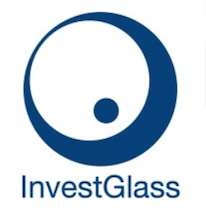Beneficial Ownership in Banking and Finance in 2024

n banking and finance, understanding beneficial ownership—the identification of individuals who ultimately own or control legal entities—is vital for preventing financial crimes. Globally, approximately $7 trillion of private wealth is concealed through complex structures involving anonymous ownership, underscoring the urgency for transparency (Open Ownership). Regulations requiring disclosure of beneficial ownership can help reduce corruption and illicit financial flows by up to 70%, emphasizing the importance of managing this effectively (Transparency International).
One key regulatory requirement is the beneficial ownership rule, which mandates banks to collect information on the beneficial ownership of accounts, identifying the actual owners of legal entities, excluding certain types of entities from providing identifying information, and establishing procedures for identifying and verifying beneficial owners of legal entity customers to prevent money laundering and tax evasion.
In an increasingly interconnected world, the transparency of asset ownership has never been more critical. Financial institutions are at the forefront of efforts to unmask the true owners behind legal entities, ensuring that the global financial system remains robust and secure. As we delve into the intricacies of beneficial ownership, we will uncover the mechanisms that safeguard against illicit activities and promote a transparent financial landscape. From regulatory frameworks to innovative compliance solutions, this guide aims to provide a comprehensive understanding of beneficial ownership and its pivotal role in modern finance.
Key Takeaways
- Beneficial ownership in banking and finance uncovers the true owners of assets, aiding transparency and fighting financial crimes like money laundering and tax evasion.
- Key regulations, such as the Beneficial Ownership Information Reporting Rule effective January 1, 2024, require detailed disclosures of beneficial owners to enhance financial system integrity.
- Identifying beneficial owners involves evaluating ownership percentage, significant control, and trust ownership, addressing complex legal structures and compliance challenges.
Understanding Beneficial Ownership in Banking and Finance

Beneficial ownership aims to unmask the true owners of assets who might be concealed behind intricate legal entities and complex structures. At its core, beneficial ownership refers to the individuals who ultimately enjoy the benefits of ownership, even when the title to an asset is held in another name. These individuals can be considered beneficial owners. This concept is particularly crucial in banking and finance, where transparency is essential for maintaining the integrity of the financial system.
Beneficial ownership significantly contributes to the simplification of asset ownership processes in the banking and finance sector, all while preserving individuals’ privacy. For instance, wealthy individuals often use trusts to act as the legal owners of their property, while they and their families remain the beneficial owners. This arrangement allows for efficient management of assets while providing a layer of protection and privacy for the true owners.
Yet, the significance of beneficial ownership isn’t limited to just convenience. It serves as a critical tool in the fight against financial crimes and illicit activities. By requiring the disclosure of beneficial ownership information, financial institutions can better prevent money laundering, tax evasion, and other nefarious activities that exploit the opacity of complex ownership structures.
Delving deeper, we’ll uncover how the intelligence gained from beneficial ownership helps to reveal the individuals behind legal entities, thereby bolstering the financial system’s resilience against abuse.
Key Regulations Governing Beneficial Ownership

With the growing significance of beneficial ownership transparency, the regulatory framework around it has also evolved. At the forefront of these efforts is the Financial Crimes Enforcement Network (FinCEN), which has implemented stringent requirements for legal entities to identify their beneficial owners. This regulatory push is part of a broader initiative to combat financial crime and enhance the integrity of the global financial system.
One of the most significant developments in this area is the implementation of the Beneficial Ownership Information Reporting Rule, set to take effect on January 1, 2024. This rule, issued under the Corporate Transparency Act of 2021, marks a watershed moment in the fight against illicit financial flows. It requires reporting companies to disclose detailed information about their beneficial owners and company applicants, including:
- Full legal names
- Dates of birth
- Residential addresses
- Unique identifying numbers
These regulations have extensive implications. Financial institutions are now mandated to collect and maintain comprehensive ownership information to curb the use of shell companies for illicit transactions. Moreover, the creation of a national registry of beneficial ownership information, as mandated by the Anti-Money Laundering Act, aims to unmask shell companies and protect the financial system from abuse.
Failure to comply with these reporting requirements can result in severe penalties, including civil fines of up to $500 per day and potential criminal penalties of up to $10,000 and/or imprisonment for up to two years. Moving ahead, it is evident that the regulatory scene will continue to transform, emphasizing more on transparency and accountability in beneficial ownership.
Identifying Beneficial Owners
Identifying beneficial owners is a critical process that requires a keen understanding of ownership structures and control mechanisms. The criteria for determining beneficial ownership are multifaceted, focusing on three key areas: ownership percentage, significant control, and ownership of trusts. Breaking down these criteria can enhance our understanding of how regulatory bodies and financial institutions identify beneficial owners.
First and foremost, ownership percentage serves as a primary indicator of beneficial ownership. Typically, an individual holding at least 25% equity or voting power in a company is considered a beneficial owner. This threshold helps to identify individuals who have a substantial stake in the entity and, therefore, potentially significant influence over its operations and decisions.
However, ownership percentage alone doesn’t tell the whole story. Significant control over a legal entity is another crucial factor in identifying beneficial owners. This can manifest in various forms, such as:
- Holding senior positions like president or chief financial officer
- Having the power to remove a majority of the board of directors
- Exercising control indirectly through loyal agents acting on behalf of influential individuals
This nuanced understanding of control ensures that beneficial ownership identification captures not just direct ownership, but also the more subtle forms of influence that can shape an entity’s actions.
The Role of Beneficial Ownership in Anti-Money Laundering (AML) Efforts

Beneficial ownership information has proven to be a formidable tool in the continuous fight against financial crimes, especially in anti-money laundering (AML) efforts. Banks and financial institutions collect this crucial data not only to comply with regulations but also to play an active role in preventing money laundering and tax evasion. By understanding who truly benefits from and controls legal entities, these institutions can more effectively:
- Identify and mitigate risks associated with illicit financial activities
- Detect and prevent fraud
- Ensure compliance with regulatory requirements
- Enhance due diligence processes
- Strengthen their overall risk management framework
Beneficial ownership information’s worth goes beyond just compliance. It serves as a vital tool for:
- Tracking suspected criminals who attempt to hide their illicit activities behind complex legal structures
- Revealing the individuals behind opaque offshore schemes, which can significantly hinder attempts at money laundering and terrorist financing
- Preventing illegal activities and ensuring transparency in financial transactions
- Making it increasingly difficult for bad actors to exploit the financial system for nefarious purposes
Maintaining the integrity of the financial system is a significant responsibility, and this level of transparency is crucial in achieving it.
To leverage the power of beneficial ownership information effectively, banks must establish robust procedures for identifying and verifying the beneficial owners of their legal entity customers. These procedures typically involve a combination of documentary and non-documentary methods to ensure the accuracy of the information collected. By implementing these rigorous verification processes, financial institutions not only fulfill their regulatory obligations but also contribute to making legal entities less appealing to criminals seeking to conceal their identities and illicit activities through a legal entity customer.
Challenges in Beneficial Ownership Identification

Despite the clear importance of beneficial ownership identification, the process is not without its complexities. Financial institutions and regulatory bodies face a myriad of challenges in their quest to uncover the true beneficiaries behind complex legal structures. One of the most significant hurdles is navigating the intricate web of ownership structures that can span multiple layers and jurisdictions. These labyrinthine arrangements often obscure the identity of the ultimate beneficial owner, making it difficult for even the most diligent investigators to follow the ownership trail.
Adding to this complexity are the various legal structures that can be used to further obfuscate beneficial ownership. Limited partnerships, for instance, present unique challenges in determining beneficial ownership, particularly when it comes to distinguishing between the roles of general and limited partners. Similarly, the use of trusts and foundations can introduce additional layers of complexity, as these structures often have their own set of rules and beneficiaries.
Perhaps one of the most notorious obstacles in beneficial ownership identification is the use of anonymous shell companies. These entities, often established in jurisdictions with lax transparency requirements, can effectively disguise the true owners of assets and businesses. Nominee entities further complicate matters by introducing additional layers of control mechanisms and contractual terms that must be carefully navigated to identify the real beneficial owner.
Addressing these challenges clearly necessitates not only sturdy regulatory frameworks but also advanced tools and technologies that can unravel even the most intricate ownership structures.
How InvestGlass Enhances Beneficial Ownership Compliance

In the face of these complex challenges, innovative solutions are emerging to help financial institutions navigate the intricate landscape of beneficial ownership compliance. Enter InvestGlass, a Swiss cloud-based platform that is revolutionizing the way banks and financial institutions approach this critical aspect of their operations. By offering a comprehensive suite of tools designed specifically for professionals seeking a Non-U.S. Cloud Act Solution, InvestGlass is positioning itself as the future of Swiss solutions in the realm of beneficial ownership compliance.
What sets InvestGlass apart is its holistic approach to compliance and customer relationship management. The platform offers a range of features that directly address the challenges of beneficial ownership identification and verification. From AI-driven setup and automated outreach to digital onboarding and portfolio management, InvestGlass provides a one-stop solution for financial institutions looking to streamline their compliance processes. This comprehensive approach not only enhances efficiency but also significantly reduces the risk of errors and oversights in beneficial ownership identification.
One of the most exciting developments in InvestGlass’s offerings is its recent partnership with Sumsub, a leader in identity verification technology. This collaboration aims to streamline the Know Your Customer (KYC) process for financial institutions globally, making it faster and more compliant. By integrating Sumsub’s advanced identity verification tools, InvestGlass demonstrates its commitment to incorporating cutting-edge technology to enhance user experience and operational efficiency. For financial institutions grappling with the complexities of beneficial ownership compliance, InvestGlass offers a powerful solution that combines comprehensive digital onboarding, AI-driven automation, and unparalleled customizability.
Case Studies: Beneficial Ownership in Practice
The notorious Panama Papers Leak serves as a vivid illustration of the impact and significance of beneficial ownership transparency. This monumental event serves as a powerful case study, highlighting the critical role that beneficial ownership information plays in uncovering complex ownership structures and illicit activities. The Panama Papers, a vast trove of documents revealing the beneficial ownership of offshore corporations, sent shockwaves through the global financial community and beyond.
The revelations from the Panama Papers were far-reaching, exposing the beneficial ownership interests of numerous high-profile individuals and entities. Among those implicated were British Prime Minister David Cameron, Icelandic Prime Minister Sigmundur Gunnlaugsson, and even Russian leader Vladimir Putin. The leak not only brought to light the extent to which complex ownership structures were being used to hide assets and avoid taxes but also catalyzed significant changes in transparency regulations worldwide. This case study underscores the vital importance of beneficial ownership transparency in maintaining the integrity of the global financial system and highlights the ongoing need for robust identification and verification processes.
Advantages and Disadvantages of Beneficial Ownership Transparency
As previously discussed, beneficial ownership transparency serves as a potent weapon against financial crimes. However, like any regulatory measure, it comes with both advantages and disadvantages that must be carefully considered.
On the positive side, transparency in beneficial ownership offers several significant benefits. It improves transaction transparency, making it harder for bad actors to conceal illicit activities. This increased visibility not only reduces fraud and criminal activities but also encourages responsibility among beneficial owners, lowering the chances of misuse or misconduct.
Moreover, understanding beneficial ownership arrangements allows companies to better manage risks associated with their business relationships. This knowledge is crucial for maintaining robust compliance programs and avoiding potential legal troubles and penalties. By having a clear picture of who ultimately owns and controls the entities they interact with, financial institutions can make more informed decisions and protect themselves from inadvertently facilitating illegal activities.
Nonetheless, we must recognize that beneficial ownership transparency brings its own set of challenges. Some of these challenges include:
- Privacy concerns, as some individuals or companies may have legitimate reasons for wanting to keep their ownership interests confidential.
- The process of identifying and verifying beneficial owners can be costly and resource-intensive for businesses.
- There’s also the potential for delays in various financial processes, such as communications, dividend issuance, and interest payments, as a result of these additional compliance requirements.
Balancing these concerns with the need for transparency remains an ongoing challenge for regulators, such as the Securities and Exchange Commission, financial institutions, and other financial institution alike.
Future Trends in Beneficial Ownership Regulation
Looking forward, two key trends in beneficial ownership regulation are poised to reshape the future landscape of financial transparency. First and foremost, there is a growing focus on enhancing the security and confidentiality of beneficial ownership databases. This trend acknowledges the sensitive nature of the information contained in these databases and the potential risks associated with data breaches or unauthorized access. As regulations continue to evolve, we can expect to see the implementation of more robust security measures and stricter access controls to protect this valuable information.
Simultaneously, there is a push to increase the usefulness of these databases for law enforcement agencies. This trend reflects the recognition that beneficial ownership information is a critical tool in the fight against financial crimes. As authorities strive to obtain beneficial ownership information more efficiently, future regulations are likely to focus on improving the accessibility and usability of this information for authorized law enforcement personnel, while still maintaining the necessary safeguards to protect individual privacy. As these trends develop, we can anticipate a more balanced approach to beneficial ownership regulation that prioritizes both security and effectiveness in combating financial crimes.
Summary
As we’ve journeyed through the intricate world of beneficial ownership in banking and finance, it’s clear that this concept plays a pivotal role in maintaining the integrity of our global financial system. From understanding the basic definition to exploring the complex regulations and challenges surrounding its identification, we’ve seen how beneficial ownership transparency serves as a crucial tool in the fight against financial crimes. The case studies we’ve examined, particularly the Panama Papers Leak, have underscored the real-world impact of opaque ownership structures and the urgent need for greater transparency.
Looking ahead, the landscape of beneficial ownership is set to evolve further, with emerging trends focusing on enhancing both the security and utility of ownership information. As financial institutions and regulators continue to grapple with the challenges of identification and compliance, innovative solutions like InvestGlass are stepping in to streamline these processes. While the path to full transparency may be complex, the benefits of a more open and accountable financial system are clear. As we move forward, it’s crucial that we continue to strike a balance between transparency and privacy, ensuring that our financial systems remain robust, secure, and resistant to abuse. The future of finance depends on our collective commitment to unveiling the true beneficiaries behind the curtain of complex ownership structures.
Frequently Asked Questions
What exactly is a beneficial owner?
A beneficial owner is an individual who ultimately owns or controls a legal entity, even if their name does not appear on official ownership documents. They often own 25% or more of a company’s shares or have significant control over its operations.
Why is beneficial ownership transparency important?
Beneficial ownership transparency is important because it helps prevent financial crimes like money laundering, tax evasion, and terrorist financing by making it harder for criminals to hide illicit activities behind complex corporate structures.
How do financial institutions identify beneficial owners?
Financial institutions identify beneficial owners through a combination of methods such as collecting ownership information during customer onboarding, conducting due diligence, and using advanced technologies and databases for verification. Cross-referencing and verifying information is also crucial in this process.
What are the main challenges in identifying beneficial owners?
Identifying beneficial owners can be challenging due to complex ownership structures, use of nominee entities and shell companies, and difficulties in verifying information across regulatory frameworks, along with the active concealment of identities by some beneficial owners.
How is technology, like InvestGlass, helping with beneficial ownership compliance?
InvestGlass and similar technologies are streamlining the beneficial ownership compliance process by offering features such as AI-driven setup, digital onboarding, and automated KYC processes, making it easier for financial institutions to collect, verify, and manage ownership information. This reduces the risk of errors and improves overall compliance.